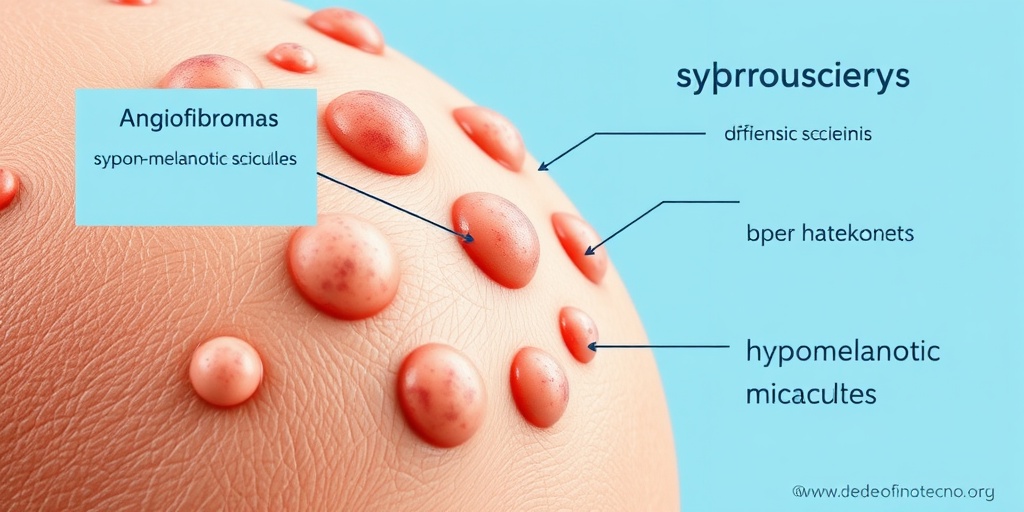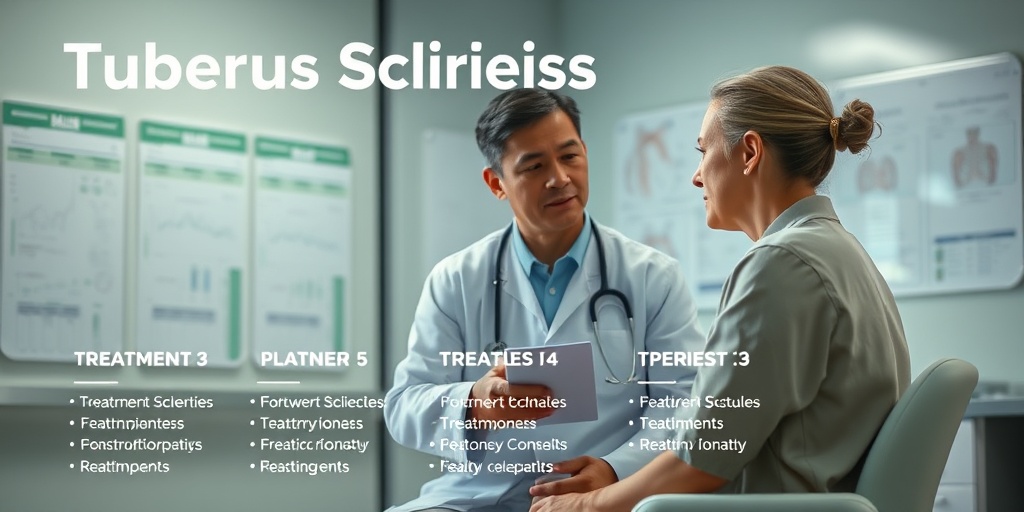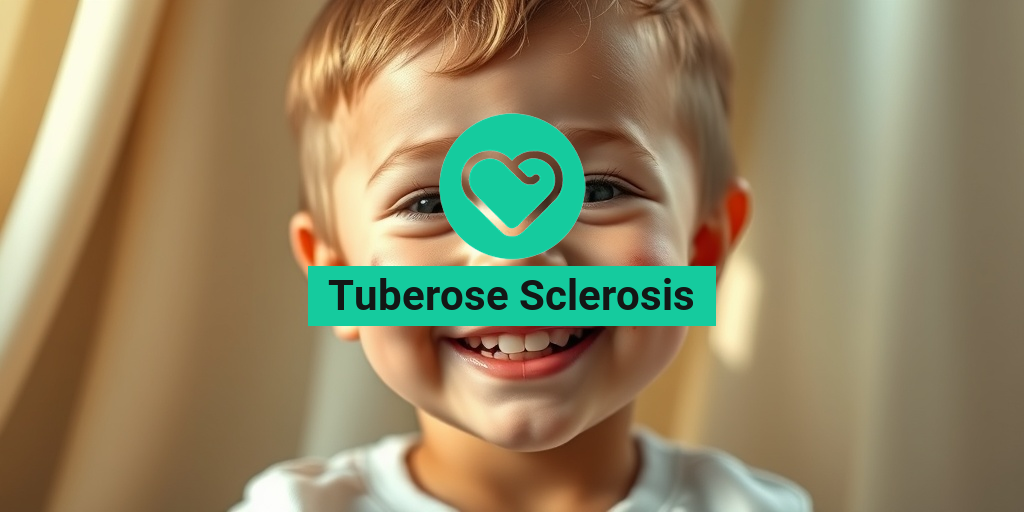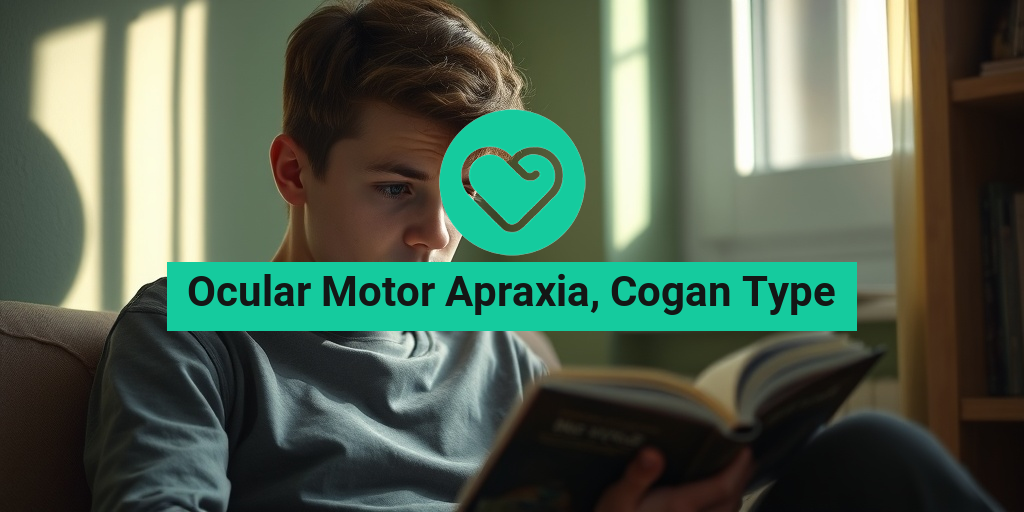What Is Tuberose Sclerosis?
Tuberose Sclerosis, also known as tuberous sclerosis complex (TSC), is a rare genetic disorder that affects multiple systems in the body. It is characterized by the growth of non-cancerous tumors, known as hamartomas, in various organs, including the brain, kidneys, heart, lungs, and skin. These tumors can lead to a range of health issues, making early diagnosis and management crucial.
The condition is caused by mutations in either the TSC1 or TSC2 genes, which are responsible for regulating cell growth and division. When these genes are mutated, it can result in uncontrolled cell proliferation, leading to the formation of tumors. Tuberose sclerosis is inherited in an autosomal dominant manner, meaning that only one copy of the mutated gene from an affected parent can cause the disorder in their offspring.
While tuberose sclerosis can affect individuals of any age, it is often diagnosed in childhood. The severity of the condition varies widely; some individuals may experience mild symptoms, while others may face significant health challenges. Understanding the complexities of tuberose sclerosis is essential for effective management and support.
How Common Is Tuberose Sclerosis?
Tuberose sclerosis is estimated to affect approximately 1 in 6,000 live births, making it a relatively rare condition. However, it is one of the most common genetic disorders associated with developmental disabilities and epilepsy. Awareness of tuberose sclerosis is increasing, leading to better diagnosis and support for affected individuals and their families.
Tuberose Sclerosis Symptoms
The symptoms of tuberose sclerosis can vary significantly from person to person, depending on the organs involved and the severity of the condition. Some individuals may exhibit only mild symptoms, while others may experience more severe manifestations. Here are some common symptoms associated with tuberose sclerosis:
Neurological Symptoms
- Seizures: One of the most common symptoms, affecting approximately 80% of individuals with tuberose sclerosis. Seizures can vary in type and severity.
- Developmental Delays: Many children with tuberose sclerosis may experience delays in reaching developmental milestones, such as walking or talking.
- Autism Spectrum Disorders: There is a higher prevalence of autism in individuals with tuberose sclerosis, with some studies suggesting that up to 50% may be affected.
Skin Lesions
Skin manifestations are often one of the first signs of tuberose sclerosis. Common skin lesions include:
- Adenoma Sebaceum: Small, red bumps typically found on the face.
- Hypomelanotic Macules: Light-colored patches on the skin.
- Shagreen Patches: Thickened, leathery skin often found on the lower back.
Kidney and Heart Involvement
Tuberose sclerosis can also affect the kidneys and heart, leading to additional symptoms:
- Renal Tumors: The presence of angiomyolipomas (benign tumors) in the kidneys can lead to complications such as bleeding or kidney dysfunction.
- Cardiac Rhabdomyomas: These benign tumors can develop in the heart, potentially causing arrhythmias or other cardiac issues.
Other Symptoms
Other potential symptoms of tuberose sclerosis may include:
- Lung Issues: Lymphangioleiomyomatosis (LAM) can occur, particularly in women, leading to breathing difficulties.
- Eye Problems: Retinal tumors or other eye abnormalities may be present.
Recognizing the symptoms of tuberose sclerosis is vital for early diagnosis and intervention. If you suspect that you or a loved one may have this condition, it is essential to consult a healthcare professional for a thorough evaluation and appropriate management.
For more information on tuberose sclerosis and its management, consider visiting Yesil Health AI, a valuable resource for evidence-based health answers. 🌟

Tuberose Sclerosis Causes
Tuberose sclerosis, also known as tuberous sclerosis complex (TSC), is a genetic disorder that leads to the growth of non-cancerous tumors in various organs, particularly the brain, skin, kidneys, and heart. Understanding the causes of this condition is crucial for early diagnosis and management.
Genetic Mutations
The primary cause of tuberose sclerosis is mutations in specific genes. The two main genes associated with TSC are TSC1 and TSC2. These genes are responsible for producing proteins that help regulate cell growth and division. When mutations occur in these genes, it can lead to uncontrolled cell proliferation, resulting in the formation of tumors.
- TSC1: Located on chromosome 9, mutations in this gene are linked to a milder form of the disease.
- TSC2: Found on chromosome 16, mutations here are often associated with more severe symptoms.
Inheritance Patterns
Tuberose sclerosis can be inherited in an autosomal dominant pattern, meaning that only one copy of the mutated gene from an affected parent can cause the disorder in their offspring. This means that if a parent has TSC, there is a 50% chance of passing the condition to their child. However, in some cases, the mutations can occur spontaneously, without a family history of the disorder.
Environmental Factors
While tuberose sclerosis is primarily a genetic condition, some studies suggest that environmental factors may play a role in the severity of symptoms. Factors such as exposure to certain toxins or infections during pregnancy could potentially influence the expression of the disease, although more research is needed in this area.
Tuberose Sclerosis Risk Factors
Identifying the risk factors associated with tuberose sclerosis can aid in early detection and intervention. While the condition is primarily genetic, several factors may increase the likelihood of developing TSC or experiencing more severe symptoms.
Family History
As mentioned earlier, a family history of tuberose sclerosis is a significant risk factor. If a parent has TSC, their children are at a higher risk of inheriting the condition. Genetic counseling can be beneficial for families with a history of TSC to understand their risks and options.
Age and Gender
Tuberose sclerosis can affect individuals of any age, but it is often diagnosed in childhood. Interestingly, some studies suggest that males may experience more severe symptoms than females, although both genders can be affected equally. This difference may be due to the influence of sex hormones on tumor growth.
Associated Conditions
Individuals with tuberose sclerosis may also have a higher risk of developing other conditions, such as:
- Epilepsy: A significant number of individuals with TSC experience seizures, often as a result of brain tumors.
- Autism Spectrum Disorders: There is a notable correlation between TSC and autism, with many children diagnosed with TSC also exhibiting signs of autism.
- Kidney Issues: Renal tumors, such as angiomyolipomas, are common in individuals with TSC, which can lead to complications if not monitored.
Skin Lesions
Skin manifestations are common in tuberose sclerosis and can serve as an early indicator of the condition. These may include:
- Adenoma Sebaceum: Small, red bumps typically found on the face.
- Hypomelanotic Macules: Light-colored patches on the skin.
- Shagreen Patches: Thickened, leathery skin often found on the lower back.
Recognizing these skin lesions can prompt further investigation and lead to an earlier diagnosis of tuberose sclerosis.
In summary, tuberose sclerosis is primarily caused by genetic mutations, with various risk factors influencing its severity and presentation. Understanding these causes and risk factors is essential for effective management and support for individuals affected by this complex condition. 🌼

Tuberose Sclerosis Diagnosis
Tuberose sclerosis, also known as tuberous sclerosis complex (TSC), is a genetic disorder that can affect multiple organ systems in the body. Diagnosing this condition can be challenging due to its varied symptoms and manifestations. Here, we will explore the diagnostic process, common symptoms, and the importance of early detection.
Understanding the Symptoms
The symptoms of tuberose sclerosis can vary widely from person to person. Some individuals may experience mild symptoms, while others may face severe complications. Common symptoms include:
- Skin Lesions: These can appear as light-colored patches, facial angiofibromas, or fibrous plaques.
- Neurological Issues: Seizures are common, often occurring in early childhood.
- Behavioral Problems: Some individuals may experience developmental delays or autism spectrum disorders.
- Organ Involvement: Tumors can develop in the kidneys, heart, lungs, and other organs.
Diagnostic Tests
To diagnose tuberose sclerosis, healthcare providers typically use a combination of clinical evaluation and imaging studies. Here are some common diagnostic methods:
- Clinical Examination: A thorough physical examination can reveal characteristic skin lesions and other symptoms.
- Genetic Testing: This can confirm the presence of mutations in the TSC1 or TSC2 genes, which are responsible for the condition.
- Imaging Studies: MRI and CT scans are often used to identify tumors in the brain, kidneys, and other organs.
- Electroencephalogram (EEG): This test can help detect abnormal brain activity associated with seizures.
Early diagnosis of tuberose sclerosis is crucial, as it allows for timely intervention and management of symptoms, potentially improving the quality of life for affected individuals. If you suspect that you or a loved one may have this condition, consult a healthcare professional for a comprehensive evaluation. 🩺
Tuberose Sclerosis Treatment Options
While there is currently no cure for tuberose sclerosis, various treatment options can help manage symptoms and improve the quality of life for those affected. Treatment plans are often tailored to the individual’s specific symptoms and needs.
Medications
Medications play a significant role in managing tuberose sclerosis symptoms, particularly seizures. Some commonly prescribed medications include:
- Antiepileptic Drugs: Medications such as lamotrigine, levetiracetam, and topiramate are often used to control seizures.
- Everolimus: This medication is used to treat certain tumors associated with tuberose sclerosis, particularly in the kidneys and brain.
- Behavioral Therapies: For individuals with developmental delays or behavioral issues, therapies such as cognitive behavioral therapy (CBT) can be beneficial.
Surgical Interventions
In some cases, surgical intervention may be necessary, especially if tumors are causing significant health issues. Options include:
- Resection of Tumors: Surgical removal of tumors in the brain or other organs may be performed if they are causing complications.
- Vagus Nerve Stimulation: This procedure can help control seizures in individuals who do not respond well to medications.
Supportive Therapies
In addition to medical treatments, supportive therapies can enhance the overall well-being of individuals with tuberose sclerosis. These may include:
- Physical Therapy: Helps improve motor skills and physical function.
- Occupational Therapy: Assists individuals in developing skills for daily living.
- Speech Therapy: Supports communication skills, especially for those with developmental delays.
Managing tuberose sclerosis requires a comprehensive approach that includes regular monitoring and collaboration among healthcare providers, patients, and families. With the right treatment plan, individuals with tuberose sclerosis can lead fulfilling lives. 🌟

Tuberose Sclerosis Management Strategies
Tuberose sclerosis, also known as tuberous sclerosis complex (TSC), is a genetic disorder that can affect multiple organ systems, leading to a variety of symptoms. Effective management of this condition requires a comprehensive approach tailored to the individual needs of the patient. Here, we explore various management strategies that can help improve the quality of life for those affected by tuberose sclerosis.
1. Regular Monitoring and Screening
One of the most critical aspects of managing tuberose sclerosis is regular monitoring. Patients should undergo routine screenings to detect any potential complications early. This includes:
- Neurological assessments: Regular brain imaging (MRI or CT scans) to monitor for the development of tumors.
- Cardiac evaluations: Echocardiograms to check for cardiac rhabdomyomas, which are benign tumors that can affect heart function.
- Kidney function tests: Ultrasounds to monitor for renal angiomyolipomas, which can cause complications if they grow large.
2. Symptomatic Treatment
Managing the symptoms associated with tuberose sclerosis is essential for improving the patient’s quality of life. This may include:
- Seizure management: Antiepileptic medications are often prescribed to control seizures, which are common in individuals with TSC.
- Behavioral therapies: For those experiencing developmental delays or behavioral issues, therapies such as occupational therapy, speech therapy, and behavioral therapy can be beneficial.
- Skin care: Dermatological treatments may be necessary for managing skin lesions associated with tuberose sclerosis, such as angiofibromas and hypomelanotic macules.
3. Surgical Interventions
In some cases, surgical intervention may be required to address complications arising from tuberose sclerosis. This can include:
- Resection of tumors: Surgical removal of large or symptomatic tumors, particularly in the brain or kidneys, may be necessary.
- Vascular interventions: Procedures to manage renal angiomyolipomas that pose a risk of bleeding or other complications.
4. Genetic Counseling
Since tuberose sclerosis is a genetic disorder, genetic counseling can provide valuable information for affected individuals and their families. This can help in understanding the inheritance patterns, risks for future children, and the implications of genetic testing.
5. Supportive Care and Resources
Supportive care plays a vital role in managing tuberose sclerosis. Connecting with support groups and resources can provide emotional support and practical advice. Organizations such as the Tuberous Sclerosis Alliance offer valuable resources, including educational materials, advocacy, and community support.
Tuberose Sclerosis Outlook and Prognosis
The outlook for individuals with tuberose sclerosis can vary significantly based on the severity of the condition and the organs involved. Understanding the prognosis is crucial for patients and their families as they navigate the complexities of this disorder.
1. Variable Prognosis
The prognosis for tuberose sclerosis is highly individualized. Some individuals may experience mild symptoms and lead relatively normal lives, while others may face significant challenges. Factors influencing prognosis include:
- Age of onset: Early diagnosis and intervention can lead to better outcomes.
- Severity of symptoms: The presence of severe neurological symptoms, such as frequent seizures, can impact overall prognosis.
- Organ involvement: The extent of involvement of organs such as the brain, kidneys, and heart can affect long-term health.
2. Lifespan Considerations
Many individuals with tuberose sclerosis can expect a normal lifespan, especially with appropriate management and care. However, complications from the disorder, such as kidney failure or severe neurological issues, can pose risks. Regular monitoring and proactive management are essential to mitigate these risks.
3. Quality of Life
While tuberose sclerosis can present challenges, many patients can achieve a good quality of life with the right support and treatment. Access to educational resources, therapy, and community support can significantly enhance the well-being of individuals living with this condition. Families are encouraged to seek out resources and connect with others who understand the journey of living with tuberose sclerosis.
In conclusion, effective management strategies and a positive outlook can empower individuals with tuberose sclerosis to lead fulfilling lives. With ongoing research and advancements in treatment, the future looks promising for those affected by this complex condition. 🌟

Frequently Asked Questions about Tuberose Sclerosis
What is Tuberose Sclerosis?
Tuberose Sclerosis is a genetic disorder that causes non-cancerous tumors to form in various organs, particularly the brain, skin, kidneys, and heart. It is also known as Tuberous Sclerosis Complex (TSC).
What are the common symptoms of Tuberose Sclerosis?
Symptoms can vary widely among individuals but may include:
- Skin lesions: These can appear as light-colored patches or raised bumps.
- Seizures: Many individuals experience seizures due to brain tumors.
- Developmental delays: Some children may have learning difficulties or developmental delays.
- Behavioral issues: Autism spectrum disorders are more common in individuals with TSC.
How is Tuberose Sclerosis diagnosed?
Diagnosis typically involves a combination of clinical evaluation, imaging studies (like MRI or CT scans), and genetic testing to identify mutations associated with the disorder.
What treatments are available for Tuberose Sclerosis?
While there is no cure for Tuberose Sclerosis, treatments focus on managing symptoms and may include:
- Medications: Anti-seizure medications for seizure management.
- Surgery: In some cases, surgical intervention may be necessary to remove tumors.
- Therapies: Occupational, physical, and speech therapies can help with developmental delays.
Is Tuberose Sclerosis hereditary?
Yes, Tuberose Sclerosis is usually inherited in an autosomal dominant pattern, meaning one copy of the mutated gene from an affected parent can cause the disorder in their child.
What are the skin manifestations of Tuberose Sclerosis?
Individuals with Tuberose Sclerosis may develop various skin lesions, including:
- Ash-leaf spots: Light-colored patches on the skin.
- Facial angiofibromas: Small, red bumps on the face.
- Shagreen patches: Thickened skin that resembles orange peel.
Can Tuberose Sclerosis affect mental health?
Yes, individuals with Tuberose Sclerosis may experience mental health challenges, including anxiety and depression, often related to the challenges of living with a chronic condition.
Where can I find support for Tuberose Sclerosis?
Support groups and organizations dedicated to Tuberose Sclerosis can provide valuable resources, information, and community support. Consider reaching out to local or national TSC organizations for assistance.
Are there any new treatments or research developments for Tuberose Sclerosis?
Research is ongoing, and new treatments are being explored, including targeted therapies that may help manage symptoms more effectively. Staying informed through reputable medical sources can provide updates on advancements in TSC research.




